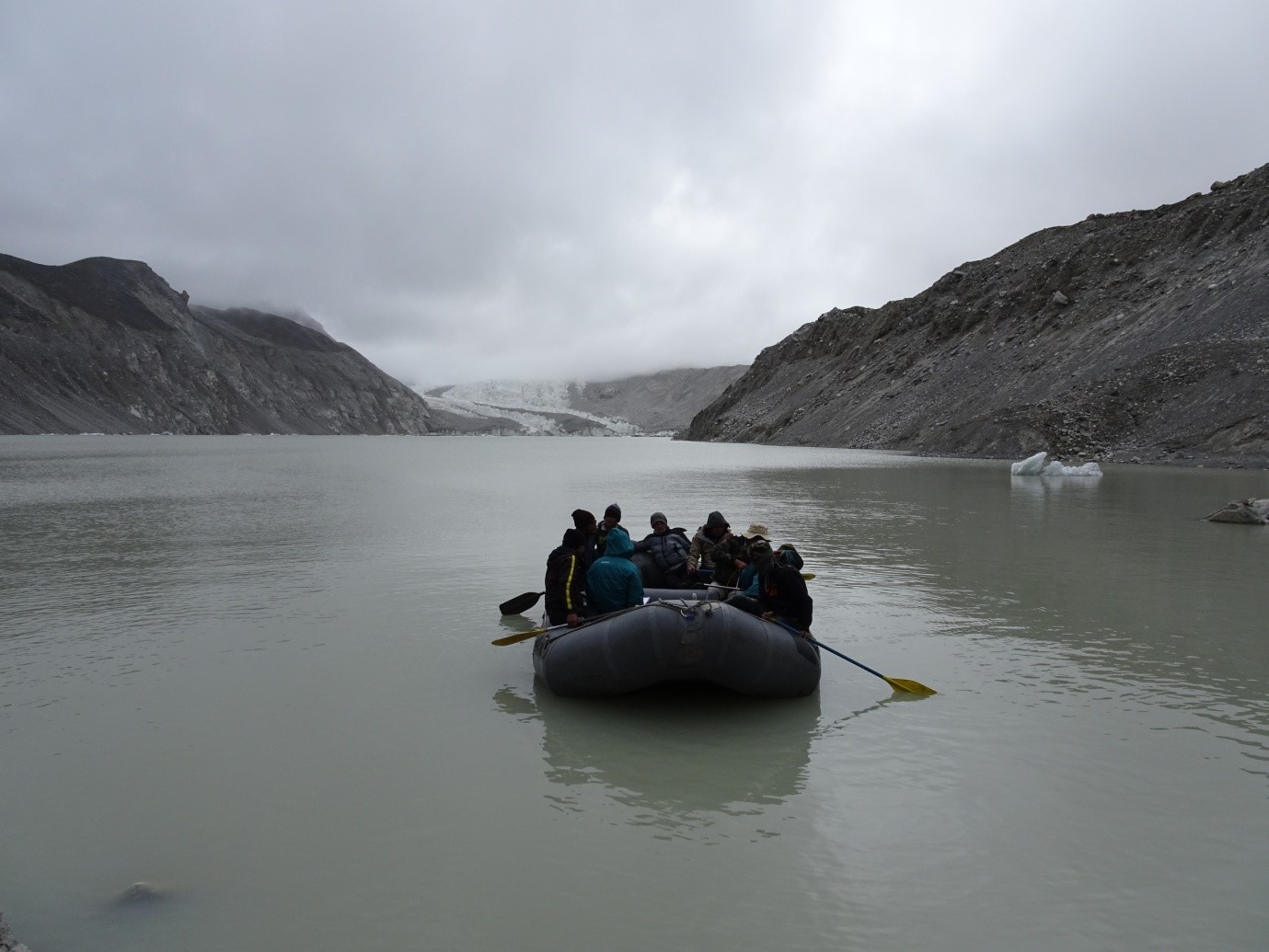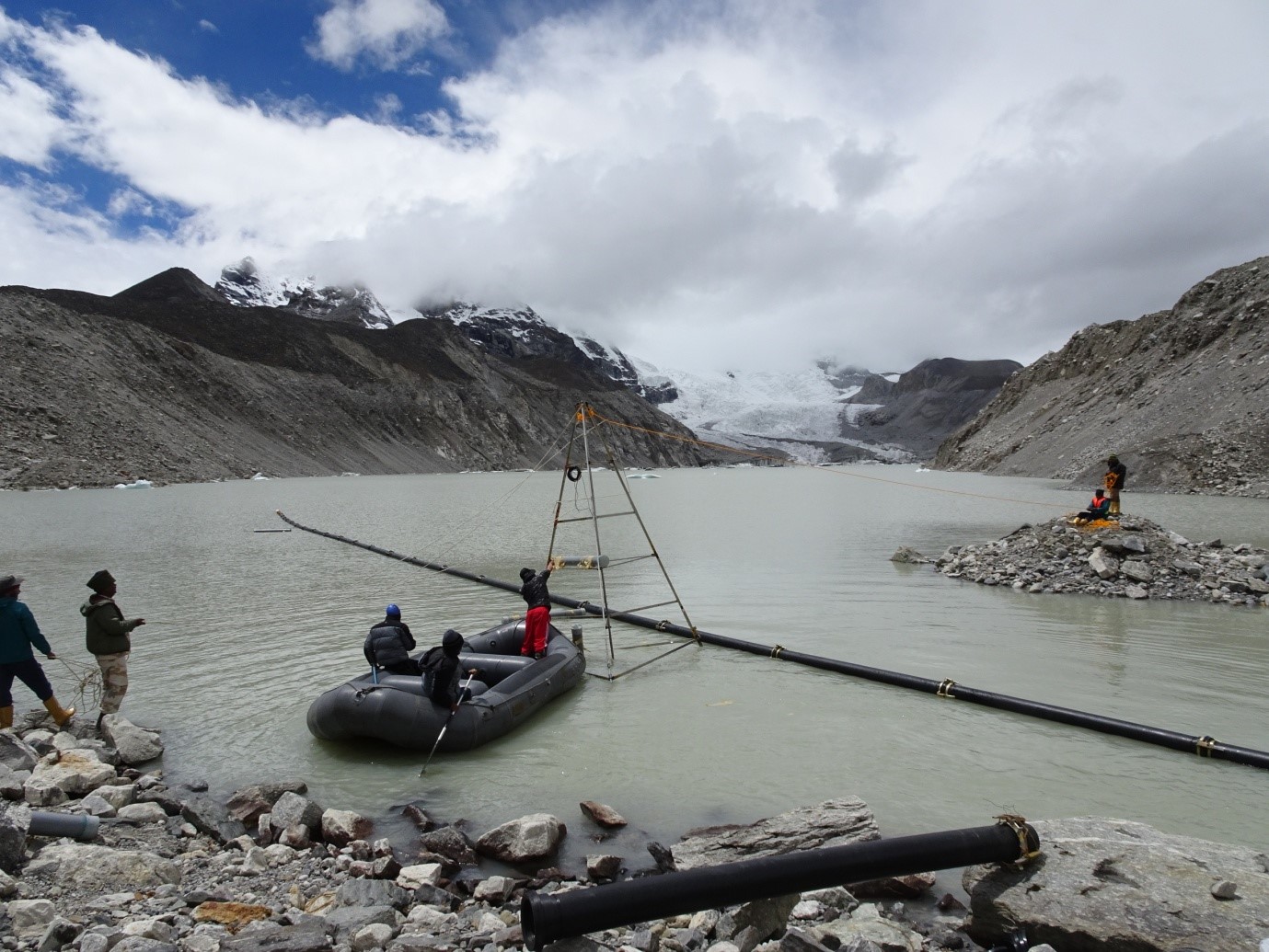The challenge With the effects of climate change, the melting of glaciers the probability and the impact of a Glacial Lake Outburst Flood (GLOF) – which refers to a sudden release of large amounts of water from a glacial lake is increasing. This is a concern across the Himalayan region.
GLOFs may be triggered by avalanches, earthquakes, high precipitation, ice melt or instability of the natural retention dam. Due to the high velocity, the high energy and multiple chain process, mobilizing big amounts of material GLOFs are a serious risk for the downstream areas; threatening people in exposed settlements, destructing road infrastructure and affecting critical infrastructure such as hydropower plants.
The mapping, modelling and prediction of GLOFs refers to a young and complex science and requires an in-depth technical expertise. Nevertheless, results and according measures related to an early warning system (EWS) require the communication and involvement of a ranger of multiple stakeholders.
Our approach and interventions GLOFs have been a concern and topic in multiple Swiss interventions (IHCAP, SCA-Himalayas). Swiss experience from the Alps and other mountainous regions in the world, which has been collected and developed since over a decade and serves as an important reference. The current Swiss engagement focus on the State of Sikkim. The following key activities have been carried out:
- GLOF Risk Assessment of nearly 4300 glacial lakes across Indian Himalayan Region (IHR) for the identification of critical lakes.
- Collaboration with NDMA for the elaboration of NDMA Guidelines on Management of GLOF (published October 2020)
- Design of a pilot project on EWS and response for GLOFs in Sikkim as part of the National Programme on Landslide Risk Reduction & Mitigation
- Support for the elaboration of the evacuation and response plans and trainings for vulnerable communities in downstream areas of the South Lhonak Lake
- Support to the Sikkim state government (SDMA) for the implementation of siphoning pipes at the South Lhonak Lake, reducing the water level, hence the GLOF risk
- In-depth assessment and selection of critical lakes in Sikkim: South Lhonak and Shako Cho
- Hazard and exposure mapping, first-order assessment for GLOFs from Shako Cho and South Lhonak Lake
- Design and implementation of two monitoring stations through a Swiss-Indian expert mission in September 2023 on lakes, South Lhonak and Shako Cho
- Survey and assessments related to training and capacity building needs for GLOFs EWS to identify relevant capacity building activities
- A programme for capacity building and training is under elaboration
These results are summarized in the following documents:
- Mission report on GLOF Risk Assessment Expedition for an Early Warning System in Sikkim
- Synthesis report on GLOF hazard and risk across the Indian Himalayan Region
- EWS training and capacity building-knowledge brief on EWS training and capacity building needs-South Lhonak and Shakho Cho Lakes, Sikkim
- Hazard and exposure mapping for outburst floods from Shako Cho and South Lhonak glacial lakes in Sikkim, India
- First-order assessment of Glacial Lake Outburst Flood risk for Sikkim and preliminary detailed hazard modelling of South Lhonak lake
- Future GLOF hazard of the South Lhonak Lake, Sikkim Himalaya. (ref https://www.sciencedirect.com/ )
Collaboration with key partners The ongoing activities related to the GLOFs EWS pilot in Sikkim are carried out in close collaboration with the state government of Sikkim (DST and DMA) and with NDMA at the central level. The technical assessments and modelling work was done by a Swiss expert consortium composed by Geotest, Geoprevent, WSL-SFL and University of Zurich.
GLOF example:
South Lhonak Lake: Lake exploration and depth measurement
South Lhonak Lake: Lake measurement (Bathymetry)
South Lhonak Lake: Installation of High Density Polyethylene pipes for siphoning of Lake water




